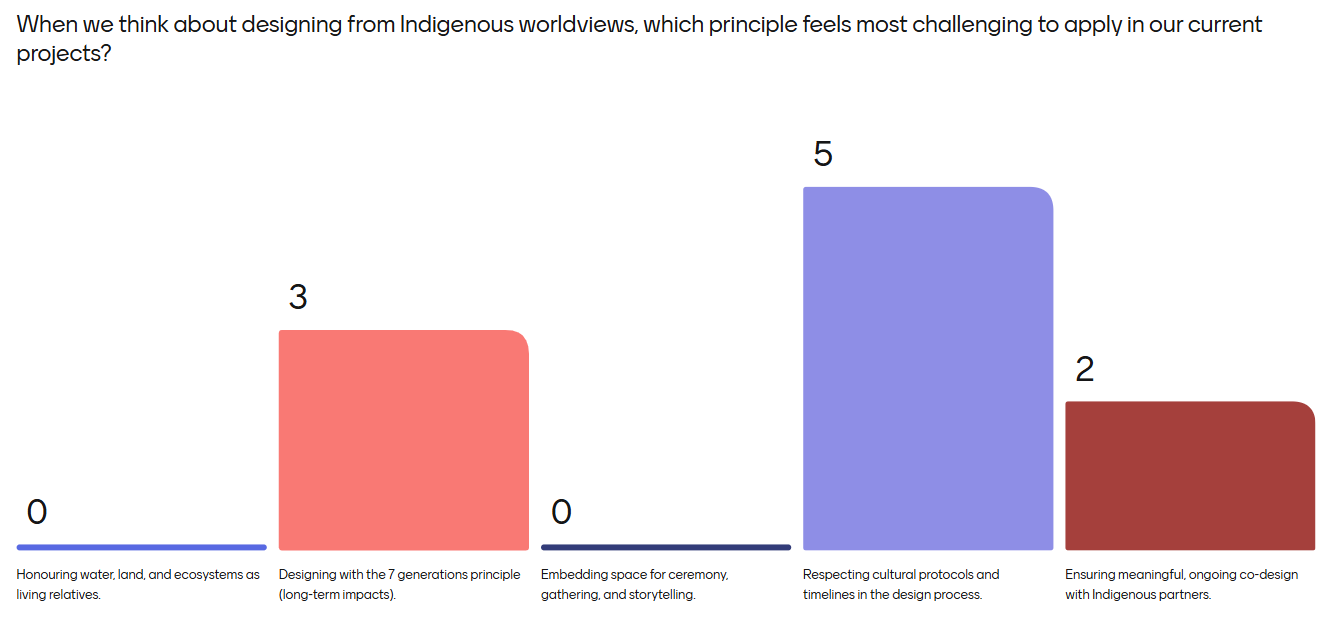Team Reflection:
Truth + Reconciliation
Last week, with Truth and Reconciliation Day approaching, we stepped back from drawings, deadlines, and meetings to sit together in reflection and conversation. We began simply: by offering words into a shared space. The word cloud that formed was both meaningful and humbling, a constellation of values like respect, listening, reflection, storytelling, and understanding. A reminder that reconciliation in design is not about a single definition but about many voices gathering, overlapping, and sometimes contradicting, just like community itself.
Some of us carry direct experience working with Indigenous communities, others have had only glimpses, and a few are just beginning this journey. Though our backgrounds differed, we approached our conversation with honesty. We admitted where we feel unprepared, where our processes fall short, and where we have seen Indigenous voices meaningfully shape a project.
We asked ourselves hard questions:
What design decisions today could ripple seven generations into the future?
How might we create spaces that feel safe for ceremony, storytelling, and community?
What does it mean to move from consultation to true co-design?
Our answers spoke of sustainability and adaptability, of cultural continuity and youth empowerment, of raw materials that weather with time, of acoustics and intimacy, of flexible spaces that welcome rather than intimidate. We named our struggles too: the difficulty of aligning cultural protocols and timelines with client schedules, the challenge of advocating for budgets that honour engagement, the work it takes to build relationships that outlast a single project.
One theme echoed louder than the rest: How do we give voice to what cannot speak?
We sat with the idea that the land itself: rivers, forests, rocks, animals, is part of the design dialogue. That future generations are our silent clients. That reconciliation is not only between people but also with place. To listen to the land is to design differently: to slow down, to notice, to ask what does this place want to become?
As we closed, each of us named one commitment: to read, to research, to attend, to advocate, to reflect, to bring seven generations thinking into our daily design questions. The words that surfaced most often were simple and profound: listening, reflection, understanding, learning, relationships.
We left reminded that reconciliation is not a checkbox but a practice. It is a discipline of listening: to Indigenous Peoples, to communities, to each other, and to the land itself. It is a call to shared authorship, to humility, and to design that carries stories forward.
And for this practice to truly thrive, it requires more than our own intentions. It asks for space. We call on our clients and partners to prioritize Indigenous engagement not as an add-on, but as an essential part of the design process, and to allow the time, resources, and respect that meaningful engagement requires. Reconciliation in design cannot be rushed; it grows through relationships, through dialogue, and through honouring the voices that must be heard.
This reflection is not the end of a conversation but the beginning of many more.








